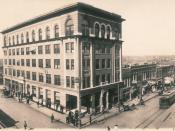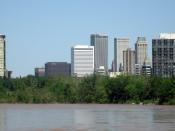REPARATIONS
Reparations are defined as "the act of making amends, offering expiation, or giving satisfaction for a wrong or injury" by Merriam Webster's online dictionary. The United States of America has awarded reparations to many different groups of people throughout history such as the casinos given to the Native Americans. However, the United States is currently facing an important reparation case from the destruction of Tulsa's Black Wall Street. This case is well deserved due to the severity of loss the African American community of North Tulsa, Oklahoma faced.
The Black Wall Street is the name that was given to the successful Greenwood Avenue of North Tulsa, Oklahoma which was completely destroyed by the worst race riot in U.S. history on May 31, 1921. Dr. Leroy Vaughn, author of Black People & Their Place in World History, describes Tulsa as "so racist and segregated that it was the only city in America that boasted of segregated telephone booths" (1).
Due to this strict segregation, the Black community had no other choice but to restrict itself to a thirty-five square block region. The area soon became "prosperous and legendary" (Vaughn 2). This business district, which began at the intersection of Greenwood Avenue and Archer Street, had its own bus line, two high schools, one hospital, two newspapers, two theaters,
three drug stores, four hotels, a public library, and thirteen churches. There were also over one hundred fifty brick commercial buildings of two and three stories that housed
clothing and grocery stores, cafes, rooming houses, nightclubs, and a large number of profession offices including doctors, lawyers, and dentist in the area. "Tulsa's progressive African American community boasted some of the city's most elegant brick homes, well furnished with china, fine linens, beautiful furniture and grand pianos" (Vaughn 2). As described, the...


